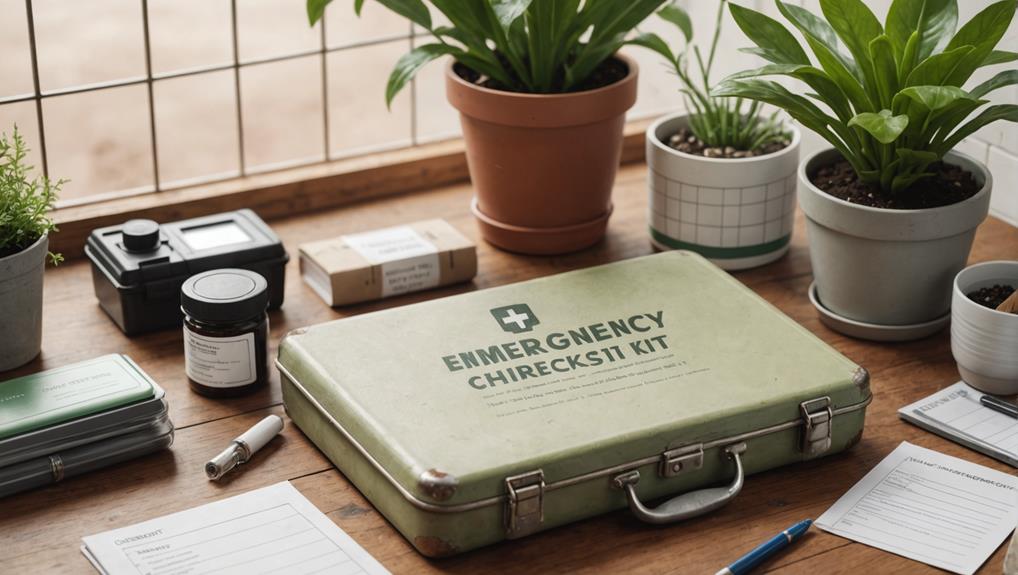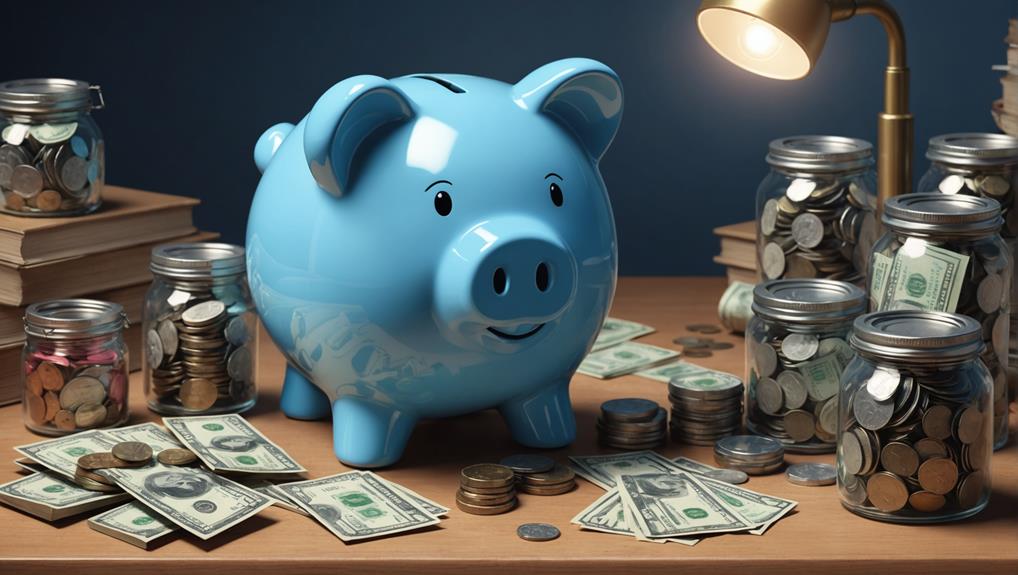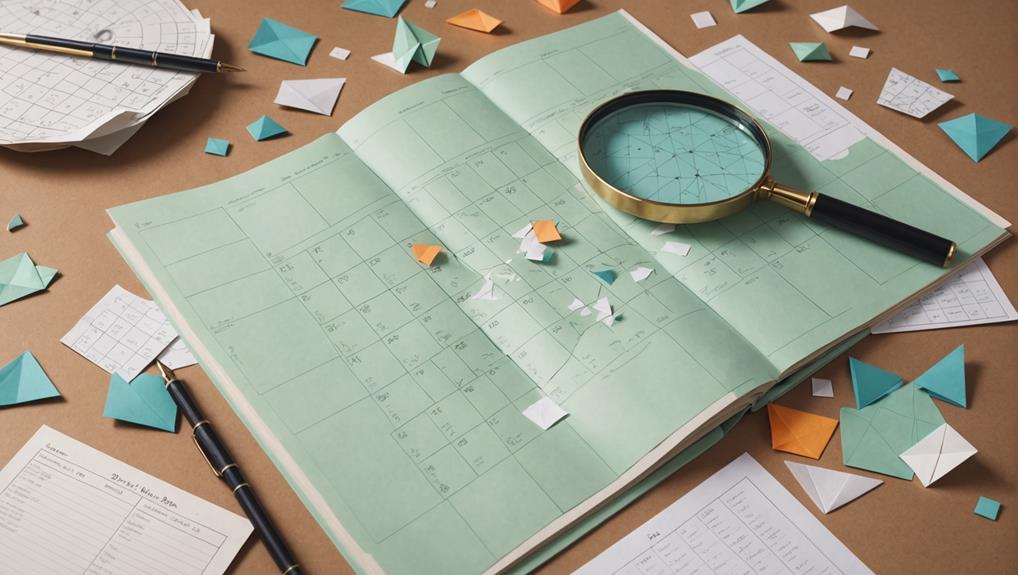As an Amazon Associate I earn from qualifying purchases.
As you consider preparing for disasters, you might feel a sense of dread wash over you – but it doesn't have to be that way. By taking a proactive, step-by-step approach, you can build confidence in your ability to respond to emergencies without letting anxiety take hold. You're about to discover a clear, actionable plan to get you started, one that breaks down the preparation process into manageable, bite-sized tasks. From identifying your biggest risks to practicing drills for a calm response, you'll learn how to take control of your disaster preparedness – and find peace of mind in the process.
Start Small to Reduce Overwhelm

By focusing on a single, manageable task, such as creating a 72-hour emergency kit, you can break down the intimidating task of disaster preparation into smaller, achievable steps.
This approach helps you build momentum and confidence, making it easier to tackle more complex tasks later on. Think of it as taking baby steps towards a bigger goal.
By concentrating on one task at a time, you'll avoid feeling overwhelmed and anxious about the entire process.
Taking small steps also allows you to identify potential roadblocks and overcome them before they become major obstacles.
For instance, you might realize you need to update your emergency contact list or gather essential documents.
Identify Your Biggest Risks
As you start building your disaster preparedness plan, pinpointing the specific risks that pose the greatest threats to your safety and well-being is crucial.
You can't prepare for everything, but you can identify the most likely hazards and prioritize your efforts accordingly. Conduct a risk assessment to determine the probability and potential impact of various disasters in your area.
Consider factors like your location, climate, and infrastructure. For example, if you live in a flood-prone area, you'll want to focus on flood preparedness.
Next, create a hazard profile to identify the specific risks that pose the greatest threats.
This will help you understand the likelihood and potential consequences of each hazard. For instance, if you live in an area prone to wildfires, you'll want to prioritize fire safety and evacuation planning.
Create a Realistic Emergency Fund

You'll need a financial safety net to fall back on when disaster strikes, so set a realistic goal for your emergency fund based on your risk profile and living situation. Consider the likelihood of natural disasters, job loss, or medical emergencies in your area and how much you'll need to cover essential expenses.
To build your fund, start by evaluating your savings habits and identifying areas for improvement.
- Set aside a fixed amount each month, making it a non-negotiable part of your budget
- Take advantage of employer-matched retirement accounts or other savings vehicles
- Sell items you no longer need or use to boost your fund
Aim to save 3-6 months' worth of living expenses, but be realistic about what you can achieve. Even a small fund is better than nothing, and you can always increase your goal over time.
Stockpile Essentials Without Hoarding
Having a financial safety net in place, now focus on stockpiling the right supplies to get you through a disaster without breaking the bank or cluttering your space. Panic buying is not the answer, as it leads to waste and unnecessary expenses. Instead, prioritize essentials and store them smartly.
Here's a starter list to get you going:
| Essential Item | Quantity |
|---|---|
| Bottled water | 1 gallon per person per day |
| Non-perishable food | 3-day supply per person |
| First aid kit | 1 per household |
| Flashlights and batteries | 1 set per household |
Remember to store your supplies in easy-to-access areas, like a designated shelf or bin. This will save you time and energy when you need them most. Smart storage is key to avoiding clutter and keeping your supplies organized.
Develop a Family Communication Plan

Create a family communication plan that outlines how you'll stay in touch during a disaster, including designated meeting points and contact information for each household member. This plan will help you stay connected and guarantee everyone's safety.
Hold regular family meetings to review and update the plan, making sure everyone understands their role and responsibilities.
Designate a meeting spot outside the home and a contact person for each family member to check in with.
Choose a communication method, such as a messaging app or a phone protocol, to stay in touch.
Identify a safe location to meet in case you get separated, such as a nearby park or a friend's house.
Practice Drills for Calm Response
You're taking a vital step in preparing for disasters by practicing drills for a calm response.
Now, it's imperative to think about the types of scenarios you'll practice, how you'll communicate effectively during drills, and when you'll schedule these exercises to guarantee everyone's preparedness.
Drill Scenarios to Consider
Identify the most likely disaster scenarios for your area, such as earthquakes, hurricanes, or wildfires, and develop practice drills to simulate these events. This will help you prepare and respond calmly in the face of a disaster. By simulating real-life scenarios, you'll be able to identify potential weaknesses in your emergency plan and make necessary adjustments.
Drill scenarios to ponder:
Fire evacuation drill
Practice evacuating your home or building quickly and safely. Identify at least two escape routes from each room, and designate a meeting spot outside where everyone can gather once they've escaped.
Natural shelters drill
Identify natural shelters in your area, such as nearby parks or other public spaces, and practice getting there quickly. Contemplate the safest routes to take and what supplies you'll need to bring.
Power outage drill
Simulate a power outage by turning off the lights and electronics in your home. Practice using flashlights, battery-powered radios, and other essential items to navigate through the darkness.
Effective Communication Plan
In a disaster, staying connected with family members and receiving critical updates can be a matter of life and death, so having a pivotal communication plan that includes practice drills for a calm response is essential.
You'll want to designate a meeting point and a contact person in case you get separated. Make sure everyone knows how to reach this person and where to meet.
It's also imperative to have a crisis messaging system in place, where you can quickly send updates and receive critical information.
Practice drills will help you stay calm and focused during an emergency.
Identify your emergency protocols, such as evacuation routes and emergency contact numbers, and make sure everyone knows what to do.
Conduct regular drills to confirm that everyone is comfortable with the plan and can respond quickly and efficiently.
This will help reduce anxiety and confusion during a disaster, allowing you to respond more effectively.
Regular Drill Schedules
Every six months, schedule a practice drill to rehearse your emergency protocols and communication plan, ensuring everyone stays on the same page and ready to respond efficiently during a disaster. This regular exercise will help you identify areas that need improvement and make necessary adjustments before it's too late.
Imagine yourself and your family members:
- Moving quickly and confidently to your designated safe zone
- Communicating effectively through your established communication channels
- Executing your emergency protocols with precision and clarity
Regular drill schedules will help you avoid drill fatigue by keeping the exercises engaging and fresh. It's also an opportunity to assess your skills and identify areas where you need more practice or training.
By incorporating different scenarios and challenges into your drills, you'll be better prepared to respond to unexpected situations.
Review and Refine Your Plan Regularly

As you review and refine your disaster plan, you'll want to make sure it stays relevant and effective.
You should regularly check and update your emergency contacts, practice drills and scenarios to verify you're prepared for different situations, and review your supply inventory to guarantee you have what you need.
Update Emergency Contacts
You'll want to regularly review and update your emergency contacts to verify they're still valid and relevant. This is vital in case of an unexpected disaster, guaranteeing you can quickly reach out to loved ones, neighbors, or friends for help.
Make it a habit to update your emergency contacts list every six months or whenever there are changes in your personal life.
Some scenarios when updating your emergency contacts:
- Has your phone number or email address changed recently?
- Have you moved to a new home or changed your workplace?
- Have there been changes in your family dynamics, such as a divorce or new additions?
Remember to also update your emergency contact information with your employer, school, or any relevant organizations.
By doing so, you'll guarantee that the right people are notified in case of an emergency.
Don't let outdated contact information hinder your ability to respond effectively during a disaster.
Stay proactive, and update your emergency contacts today!
Practice Drills and Scenarios
Regular practice drills and scenario planning help identify potential weaknesses in your emergency plan, allowing you to refine and strengthen it before disaster strikes.
By conducting disaster simulations and emergency rehearsals, you can test your plan's effectiveness and identify areas for improvement.
This proactive approach enables you to fine-tune your strategy, ensuring it's tailored to your specific needs and circumstances.
During these practice drills, consider various disaster scenarios, such as earthquakes, hurricanes, or power outages.
Walk through each scenario, evaluating your response and identifying potential bottlenecks.
This hands-on approach helps you develop muscle memory, so you'll be better equipped to respond quickly and confidently in a real emergency.
Review Supply Inventory
Your emergency plan's effectiveness hinges on having the right supplies, so it's crucial to regularly review your inventory to certify it's complete, relevant, and easily accessible. This guarantees you're prepared for any situation, from natural disasters to power outages. Think of it as managing your supply chain, where you're the CEO of your emergency response.
Imagine a flashlight with dead batteries, leaving you in the dark during a blackout.
Picture a first aid kit without bandages, making it difficult to treat injuries.
Envision a water storage container that's expired, rendering it undrinkable.
Frequently Asked Questions
Can I Prepare for Disasters on a Limited Budget?
You can prepare for disasters on a limited budget by getting creative with budget-friendly alternatives and scouring thrift stores for secondhand supplies, ensuring you're ready for the unexpected without breaking the bank.
How Often Should I Rotate My Emergency Food Stock?
You should rotate your emergency food stock every 6-12 months to guarantee freshness and prevent food expiration. Implement stockpiling strategies like FIFO (first-in, first-out) and date-labeling to maintain a reliable supply.
What if I Have Pets or Special Needs Family Members?
When planning for emergencies, you'll want to ponder your furry friends and loved ones with special needs. Invest in pet carriers and stock up on special diets to guarantee their comfort and safety during evacuations.
Can I Customize My Plan for Specific Disasters?
You can tailor your emergency plan to specific disasters by conducting disaster profiling, identifying vulnerable areas and likely scenarios, and then engage in scenario training to rehearse your response, ensuring you're prepared for the unexpected.
Is It Necessary to Have a Physical Copy of My Plan?
You're wondering if you need a physical copy of your plan, but consider this: having a digital backup guarantees easy access, and sharing it with your family enhances communication – making it a more reliable, innovative approach.
As an Amazon Associate I earn from qualifying purchases.










